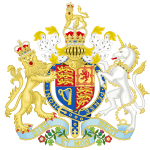- Claim of Right Act 1689
-
"Claim of Right" redirects here. For other uses, see Claim of Right (disambiguation).
The Claim of Right is an Act passed by the Parliament of Scotland in April 1689. It is one of the key documents of Scottish constitutional law.
Contents
Background
In the Glorious Revolution, William of Orange landed with his army in England on 5 November 1688. King James VII of Scotland, who was also King of England and Ireland as James II, attempted to resist the invasion. He then sent representatives to negotiate, and he finally fled England on 23 December 1688.
Whilst the Convention Parliament in England declared that James, as King of England, had abdicated the Government, and issued an English Bill of Rights on 13 February 1689 offering the Crown of England to William and Mary, the Scots found themselves facing a more difficult constitutional problem. As James had not been present in Scotland during the crisis and had not fled from Scottish territory in December, it would be highly dubious to claim that he had 'abdicated' the Scottish throne.
Process
Therefore, a Convention of the Scottish Estates met to consider letters received on 16 March 1689 from the two contenders for the Crown. On 4 April they voted to remove James VII from office, drawing on George Buchanan's argument on the contractual nature of monarchy.[1]
Later that month, the Convention adopted the Claim of Right and the Article of Grievances, enumerating what they saw as the contemporary requirements of Scottish constitutional law. It also declared that, because of his actions in violation of these laws, James had forfeited the Scottish throne.[2]. The effect of the Claim of Right was to "bolster the position of parliament within the Scottish constitution at the expense of the royal prerogative"[3].
The Convention proceeded to offer the crown on the basis of these documents to William and Mary, who accepted it on 11 May 1689, and were proclaimed King and Queen of the Scots as William II and Mary II, though with subsequent controversy over whether the Claim of Right articles against Episcopacy were fully accepted by the new monarchy.[1]
References
- ^ a b Lynch, Michael (1992). Scotland: A New History. Pimlico. p. 302. ISBN 0-7126-9893-0.
- ^ "Claim of Right". Wikisource. http://en.wikisource.org/wiki/Claim_of_Right. Retrieved 2008-07-20.
- ^ Harris, Tim Revolution: The Great Crisis of the British Monarchy 1685-1720 Allen Lane (2006) pp401-402
External links
- Official text of the Claim of Right Act 1689 as amended and in force today within the United Kingdom, from the UK Statute Law Database
United Kingdom legislation Pre-Parliamentary legislation Acts of Parliament by states preceding
the Kingdom of Great BritainActs of the Parliament of England to 1483 · 1485–1601 · 1603–1641 · Interregnum (1642–1660) · 1660–1699 · 1700–1706
Acts of the Parliament of Scotland
Acts of the Parliament of Ireland to 1700 · 1701–1800Acts of Parliament of the
Kingdom of Great Britain1707–1719 · 1720–1739 · 1740–1759 · 1760–1779 · 1780–1800
Acts of Parliament of the United Kingdom of
Great Britain and Ireland and the United
Kingdom of Great Britain and Northern IrelandChurch of England Measures Legislation of devolved institutions Acts of the Scottish Parliament
Acts and Measures of the Welsh Assembly
Acts of the Northern Ireland Assembly / of the Northern Ireland Parliament
Orders in Council for Northern IrelandSecondary legislation Categories:- 1689 in law
- 1689 in Scotland
- Acts of the Parliament of Scotland
- Constitutional laws of Scotland
- Succession to the British crown
- William III of England
- Mary II of England
Wikimedia Foundation. 2010.

